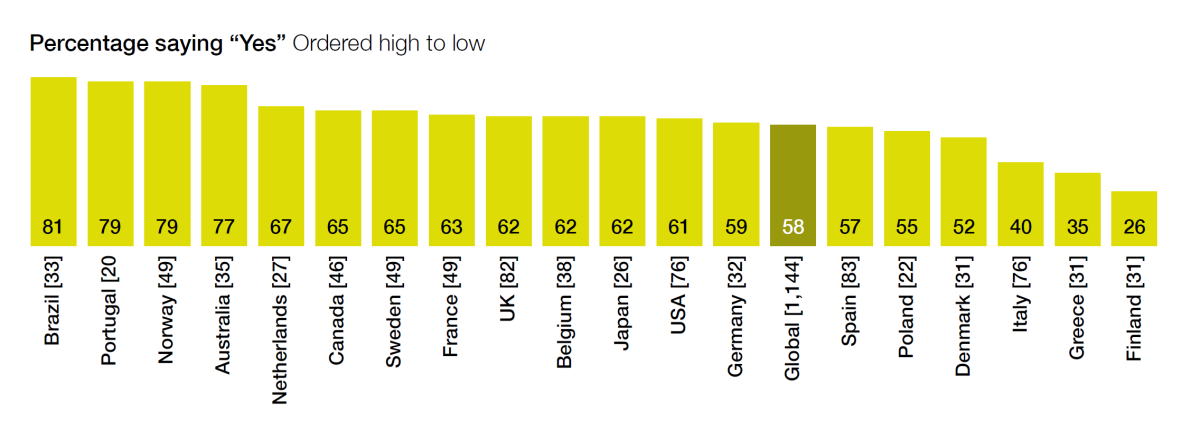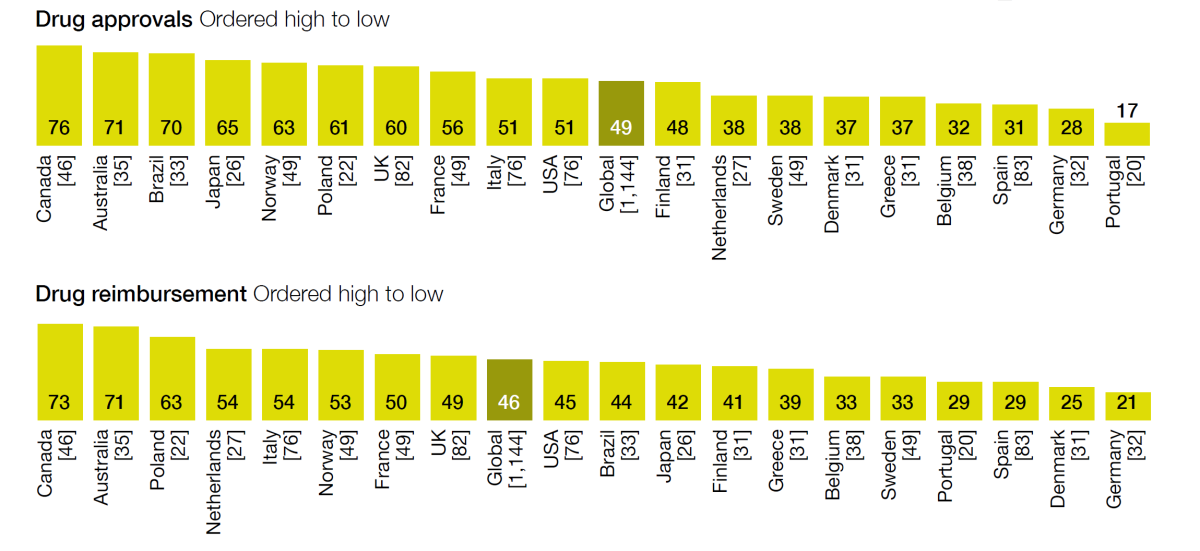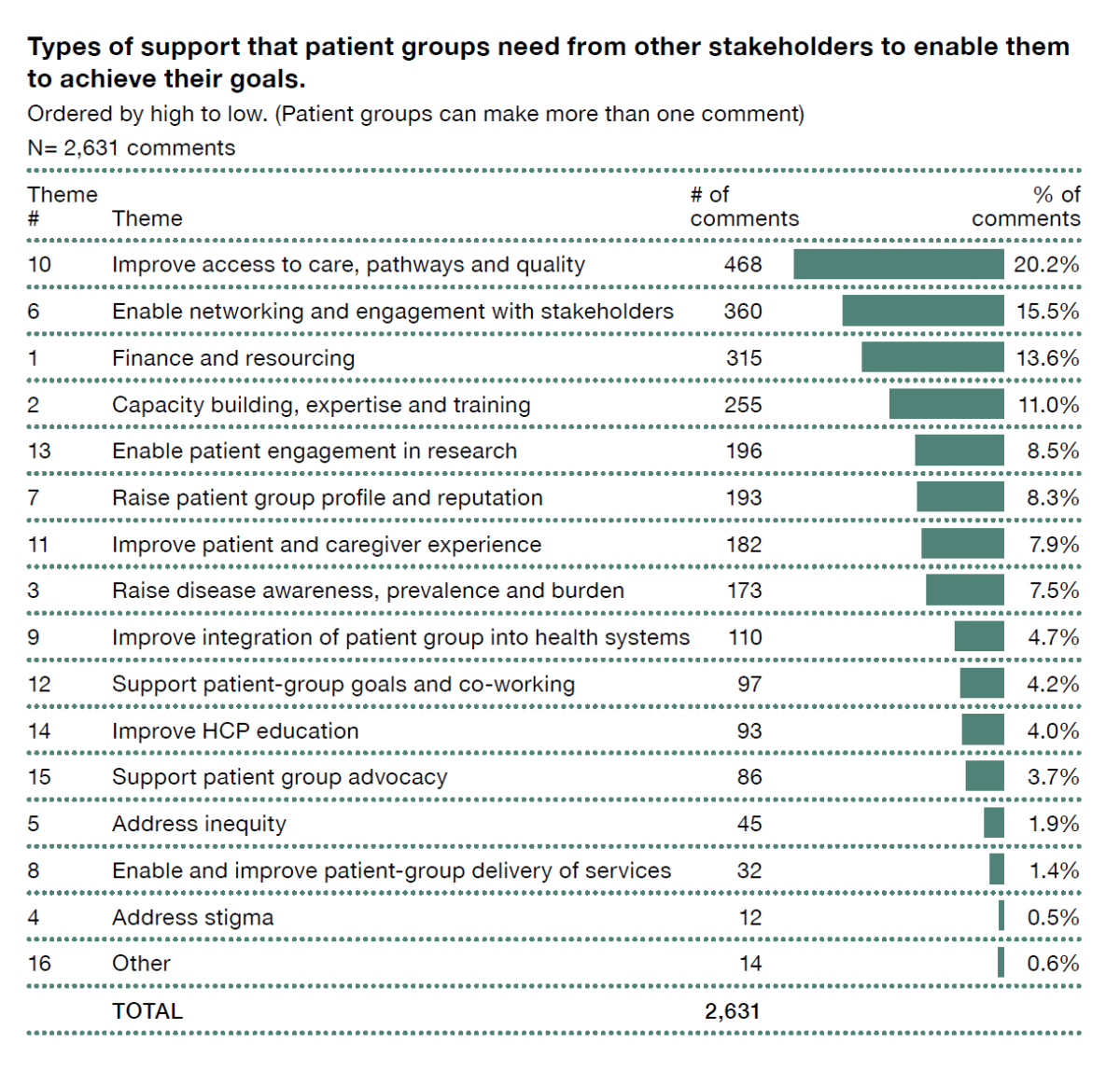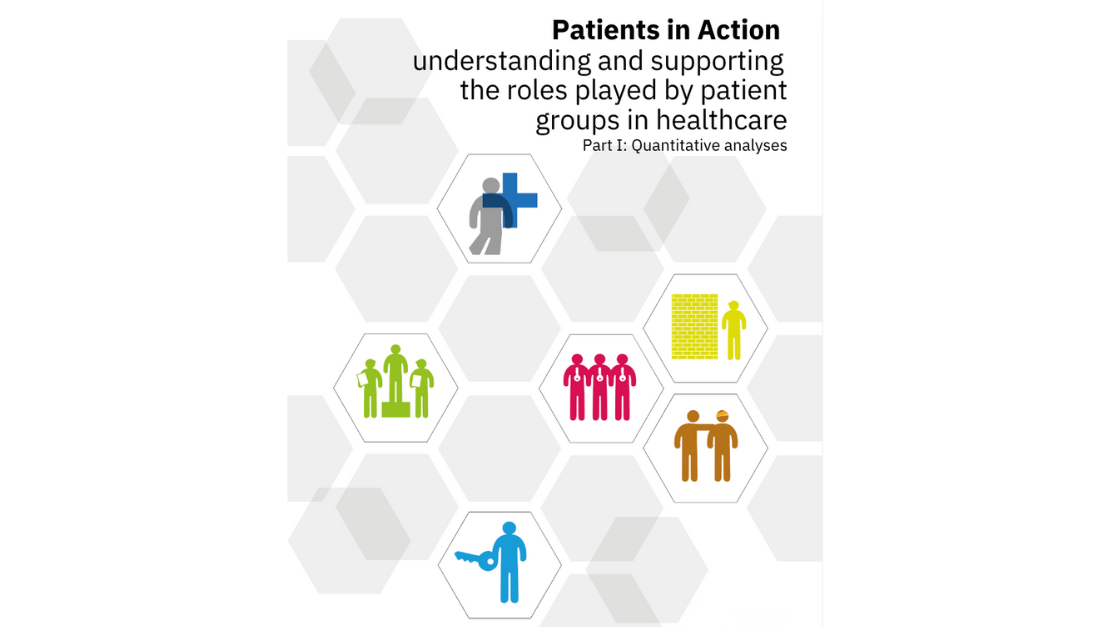Patient groups at the heart of healthcare: a vital partnership for a healthier world
Patients in Action
November 2024:
Over the past 40 years, the role of patient groups has undergone a radical transformation. Historically, patients—and the groups representing them—had minimal influence on their healthcare systems, frequently relegated to passive recipients of care. This has changed with patient groups becoming powerful advocates and vehicles for change, actively shaping healthcare policies and delivering essential services to those they represent since the 1980s.
In this blog, we explore the findings of PatientView’s latest report, ‘Patients in Action: understanding and supporting the roles played by patient groups in healthcare’; highlighting the expanding influence of patient groups globally, and showcasing case studies from areas where they are at the forefront of advancing healthcare.
Global data shows patient groups as critical partners in healthcare
Patient groups are making strides, quickly becoming indispensable pillars of health and care systems worldwide. Findings from a survey of 1,144 patient groups in 83 countries show that almost 3 in 5 see themselves as indispensable to healthcare systems, with a further 1 in 4 considering themselves essential in certain contexts. These results highlight a growing body of independent and confident stakeholders in healthcare.


Patient groups feel most influential in healthcare education
In terms of where patient groups felt most influential, the survey reveals these groups believe they do best in the provision of patient information (89% have at least some influence in this area), patient education (90%) and the education of healthcare professionals (73%). These groups describe how they provide invaluable support and guidance to patients, enabling them to better understand their conditions, and help navigate health and care pathways. Although some patient groups still feel marginalised by health and care professionals.
Patient group can also influence government healthcare policymaking and outcomes for pharma companies
63% of respondent patient groups say they can influence government healthcare policymaking, with as many as 91% of Australian patient groups saying that is the case.
Around half of respondent patient groups feel they have an influence over drug approvals and drug reimbursement. However, the figure among Canadian patient groups is as high as 76% and 73% respectively.

Engagement with regulatory bodies has also improved vastly. Compared to just 21% in 2018, 67% of patient groups now actively advocate to drug regulators for better patient care and treatment. Engagement with drug-treatment clinical trials and direct health research is also increasing to become a core activity, rather than being restricted purely to the purview of academic institutions, industry, and governmental bodies.
Percentage of respondent patient groups that stated “Yes”

Patient groups and the media
Outside of the realm of healthcare, patient groups relationship with the media have improved substantially; 62% of patient groups feel that the media support their activities, with a further 21% actively welcoming support from them.
What support do patient groups need to move forwards

When asked what patient groups needed from other stakeholders, more than 1 in 5 cited support in improving access to care, pathways and care quality. While the specific support required varied depending on the patient group, most discussed addressing failings in the current health and care systems such as wait times, screening, and improved access to quality diagnosis, treatment, care and support.
Perhaps unsurprisingly, financing and resourcing appear to be a recurring challenge for patient groups, over 1 in 10 flagged it as an area where greater support is needed. Of all 19 countries examined in detail, patient groups in Australia are the worst affected; those in Sweden, where there is also access to state funding, the least. Securing consistent funding provides patient groups with the security to establish or expand services, engage in research, and advocate for patients more broadly. Most patient groups rely on competitive and sporadic donations, grants, and/or partnerships for funding.
In summary, patient groups are no longer passive bystanders but rather an active force transforming healthcare systems worldwide, particularly in advocacy, education, and in some cases service delivery. While patient groups have made leaps and bounds in these areas, it is clear they face significant challenges which limit their ability to do more. Strengthening patient groups not only enables them to deliver essential services that are not currently being delivered by healthcare systems, but also improves care for those of whom it is most important—the patients themselves. By supporting and helping to address these challenges, we can build more responsive and resilient patient groups that are a benefit to all.
To obtain a copy of the full report, please contact Alex Wyke at PatientView via email ([email protected]).
To access the press release in your language click here
